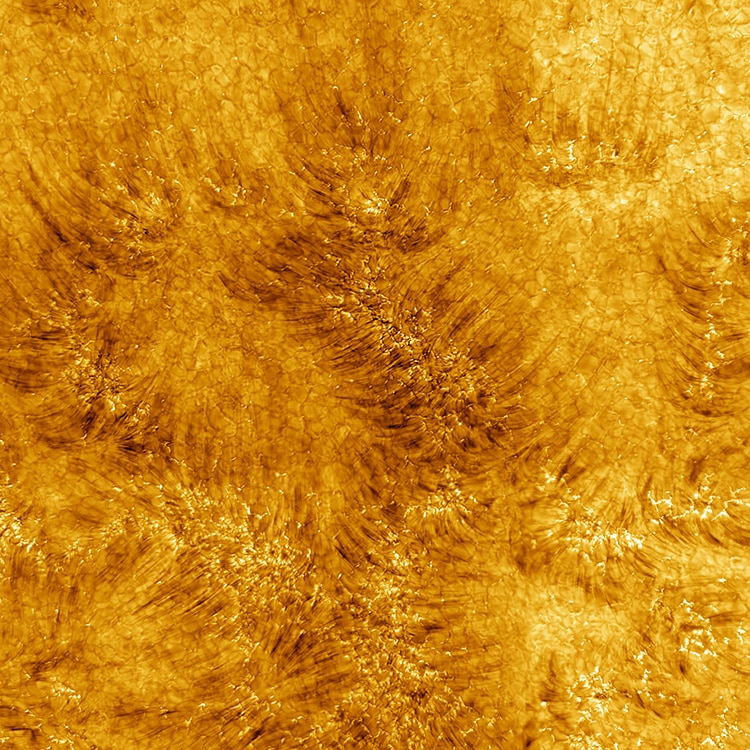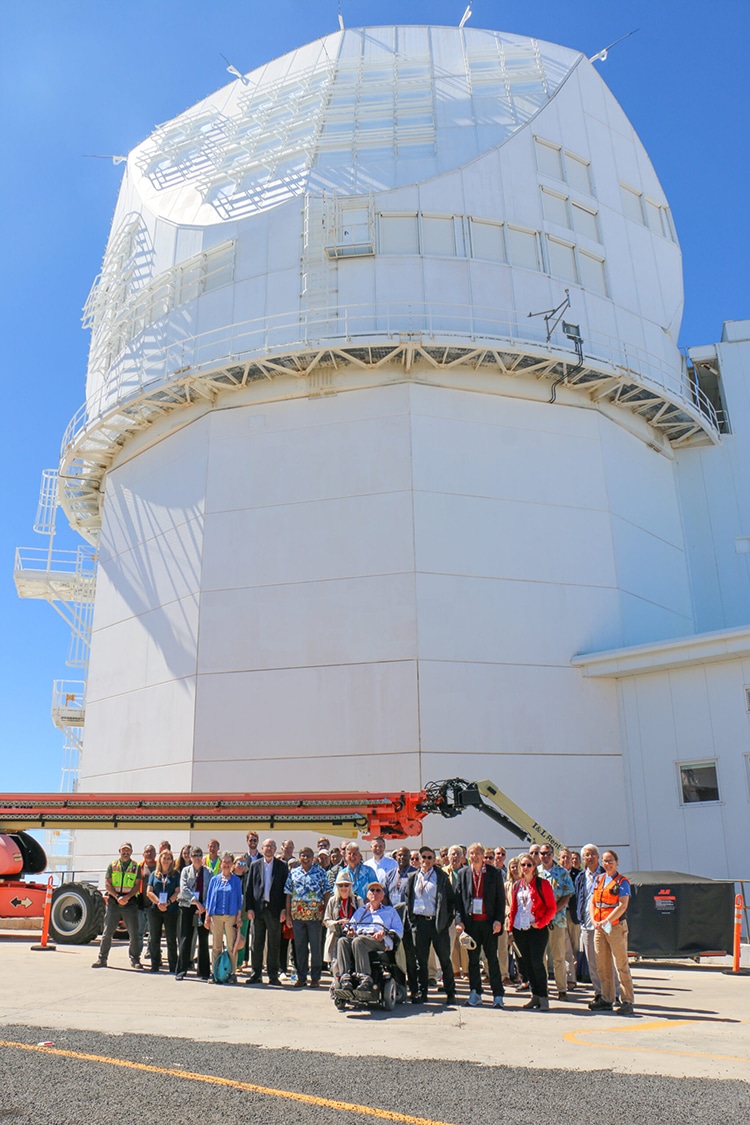The chromosphere of the sun photographed by the Daniel K. Inouye Solar Telescope on June 3, 2022.
(Photo:NSO/AURA/NSF)
Looking directly at the Sun is bad for your eyes.
Looking with a telescope could seriously damage your health and vision.

The chromosphere of the sun photographed by the Daniel K. Inouye Solar Telescope on June 3, 2022. (Photo:NSO/AURA/NSF)
The first two images released depict the fiery chromosphere of the Sun.
This is the Sun’s atmosphere above its surface.
Each image depicts 31,853 square miles.

The gorgeous surface of our star. (Photo:NSO/AURA/NSF)
Earth looks like a marble when inserted into the frame of reference.
These images are groundbreaking for the insight they provide into the well-known star.
The telescope which produced them has been a scientific dream for decades.

Earth overlaid to show a size comparison with the area of sun surface depicted. (Photo:NSO/AURA/NSF)
Indigenous leaders were present for the inauguration and are members of a working group promoting cultural awareness and respect.
Hawaii has ideal astronomy sites for telescopes, but the government hasnot always respectedthe Indigenous residents.
The celebration honored the collaborative effort between the many entities and individuals needed to bring the telescope to operations.

NSF leaders, congressional dignitaries, and members of both the scientific and Native Hawaiian communities pictured at the NSF’s Daniel K. Inouye Solar Telescope on August 31st, 2022. (Photo:NSO)
Imagine the images to come.
The gorgeous surface of our star.
(Photo:NSO/AURA/NSF)
These images capture vast swaths of the chromosphere of the star.
Earth overlaid to show a size comparison with the area of sun surface depicted.